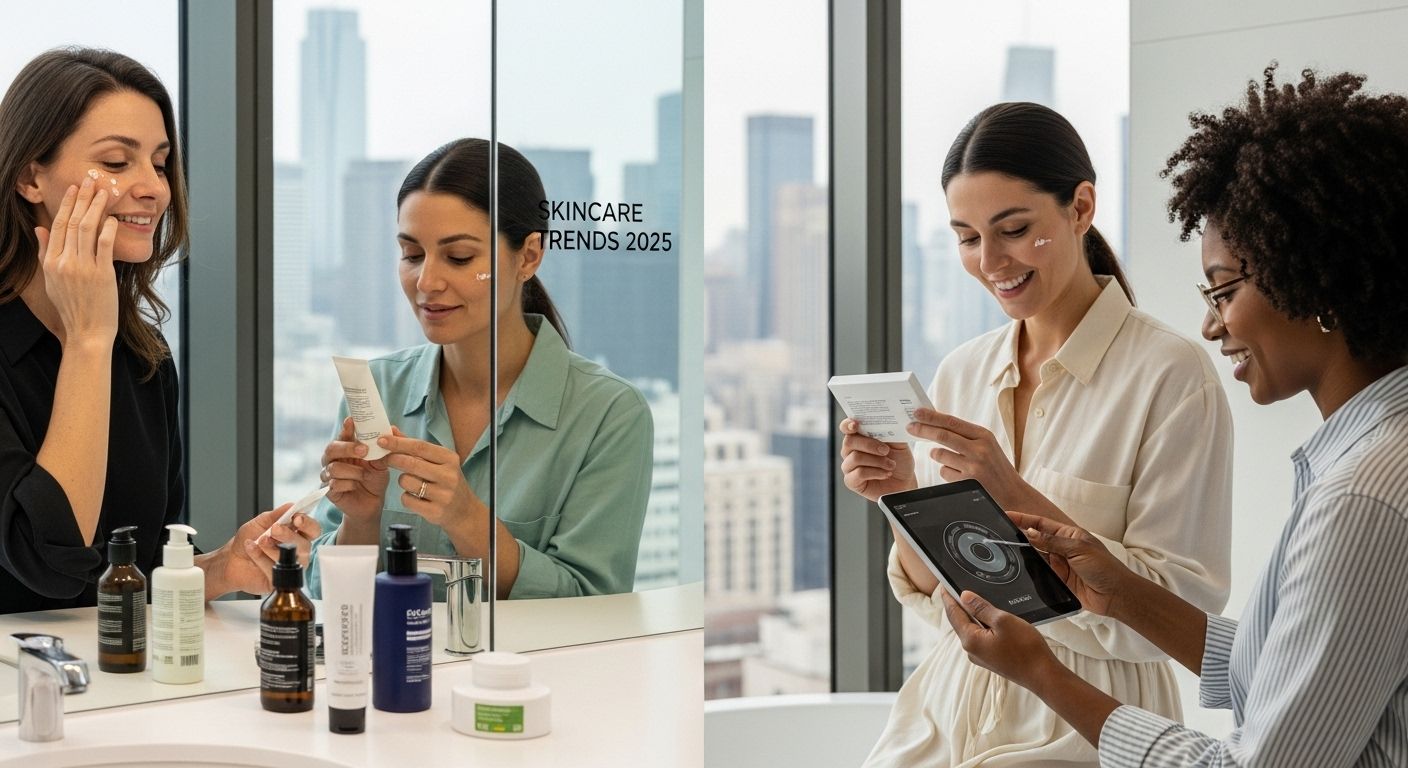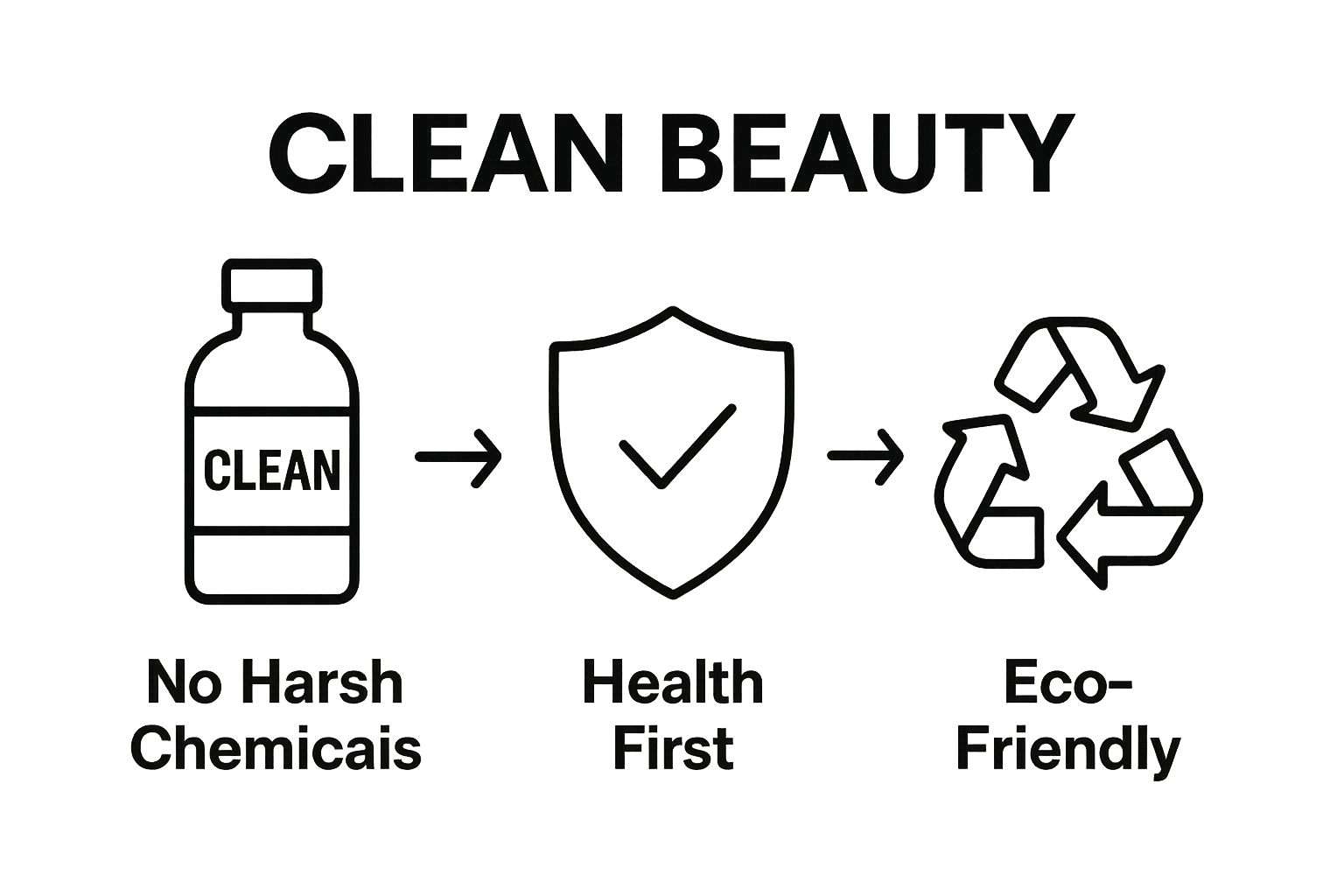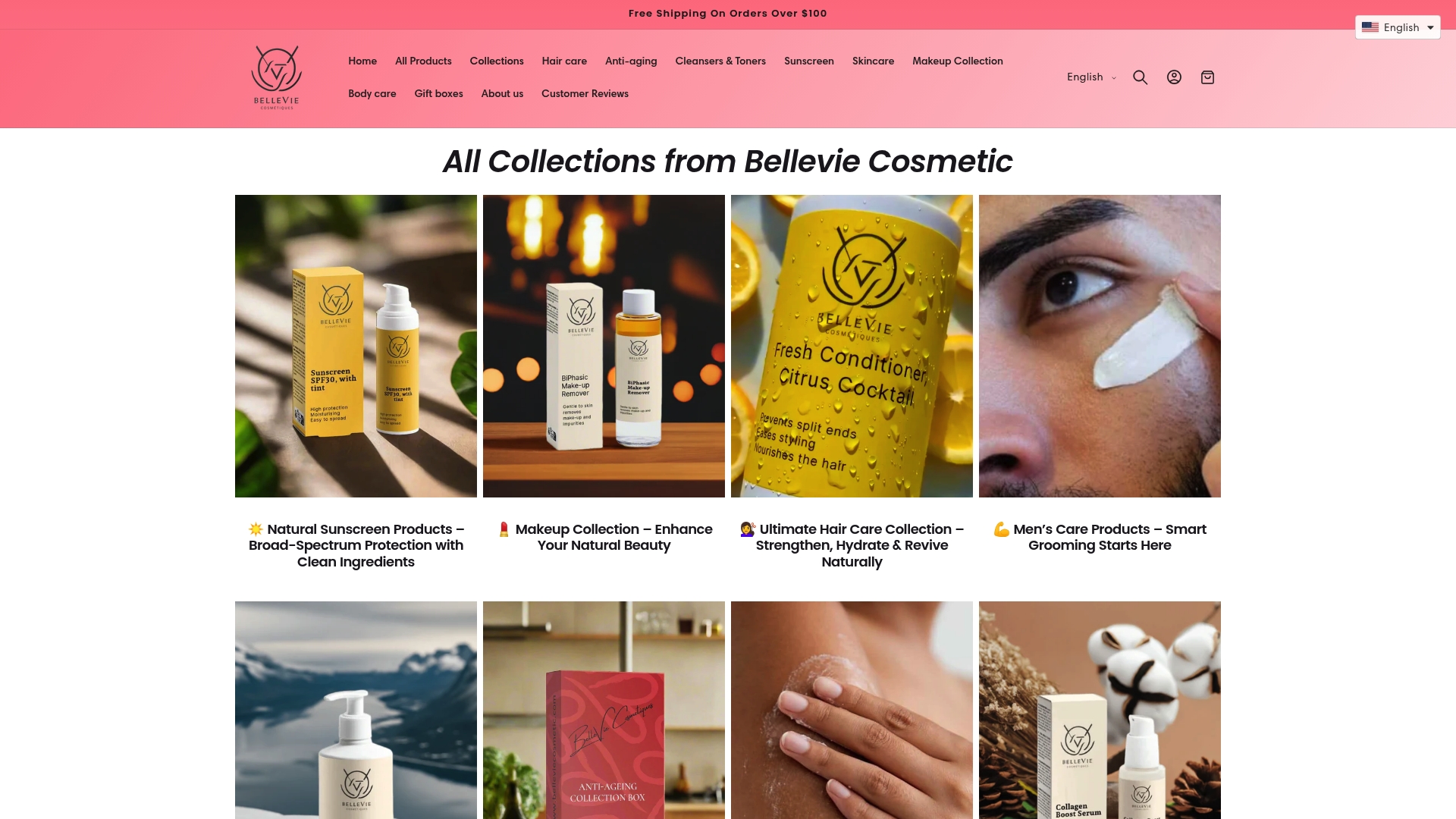
Skincare is heading somewhere few predicted. California now requires that all skincare packaging be recyclable or compostable by 2032, pushing brands to innovate at a breakneck pace. Most people still think the hottest trends are about exfoliants or creams in fancy jars. But the real disruptors are hidden in new ingredients and high-tech tools that do more than just pamper your skin—they are rewriting what skincare means from the inside out.
Table of Contents
- What Are The Emerging Ingredients Driving Global Skincare Trends?
- Why Clean Beauty Is Gaining Popularity In 2025
- How Sustainability Shapes The Future Of Skincare Products
- The Role Of Technology In Personalizing Skincare Solutions
- Understanding The Connection Between Wellness And Skincare Routines
Quick Summary
| Takeaway | Explanation |
|---|---|
| Regenerative ingredients enhance skin repair | Exosomes promote cellular repair, increase collagen, and strengthen the skin barrier for rejuvenated skin health. |
| Clean beauty demands transparency and safety | Consumers expect brands to avoid harmful ingredients and prioritize health, leading to a paradigm shift in product formulations. |
| Sustainable packaging is essential for brands | New regulations require recyclable or compostable packaging, urging brands to adopt environmentally friendly practices. |
| Technology personalizes skincare like never before | AI and advanced diagnostics allow for personalized skincare recommendations based on individual skin profiles and data. |
| Wellness is integral to effective skincare routines | Stress management and holistic approaches improve skin health, reflecting the connection between mental and physical well-being. |
What Are the Emerging Ingredients Driving Global Skincare Trends?
As the global skincare landscape continues evolving, innovative ingredients are transforming how consumers approach skin health and protection. These emerging compounds represent more than just temporary trends — they signal a profound shift toward scientifically backed, targeted skincare solutions that address complex skin concerns with precision and effectiveness.
Regenerative Ingredients: Beyond Traditional Skincare
The future of skincare is increasingly focused on regenerative technologies that actively repair and rejuvenate skin at the cellular level. Exosomes are emerging as a groundbreaking ingredient, representing a new frontier in skincare science. According to a peer-reviewed review in the Journal of Drugs in Dermatology, these cell-derived extracellular vesicles show remarkable potential for skin regeneration by promoting extracellular matrix production and inhibiting matrix metalloproteinases (MMPs).
Key characteristics of regenerative ingredients include:
- Cellular-level skin repair mechanisms
- Enhanced collagen and elastin production
- Targeted inflammation reduction
- Improved skin barrier function
Hyperpigmentation and Skin Tone Correction
Addressing uneven skin tone and hyperpigmentation has become a critical focus in global skincare trends. Tranexamic acid is quickly emerging as a potent ingredient for addressing complex pigmentation issues. Research indicates that when combined with advanced treatments like laser therapy, topical tranexamic acid can significantly reduce melasma and improve overall skin tone.
Barrier Support and Skin Resilience
Modern skincare is prioritizing ingredients that support and strengthen the skin’s natural protective barrier. Ectoin, an innovative extremolyte, represents a sophisticated approach to skin barrier repair. Clinical studies demonstrate its effectiveness in managing inflammation and supporting skin resilience, particularly for individuals with sensitive or atopic-prone skin.
These emerging ingredients reflect a broader trend: skincare is moving beyond superficial treatment toward comprehensive, science-driven solutions that work in harmony with the skin’s natural biological processes.
To help clarify the differences and similarities among the most significant emerging skincare ingredients of 2025, the following table compares key features and benefits as described in the article.
| Ingredient | Main Benefit | Key Mechanism | Skin Concern Targeted |
|---|---|---|---|
| Exosomes | Skin repair and rejuvenation | Promotes extracellular matrix production; strengthens skin barrier | Aging, skin damage |
| Tranexamic Acid | Hyperpigmentation reduction | Reduces melasma and pigmentation when combined with advanced treatments | Uneven skin tone, melasma |
| Ectoin | Barrier support and resilience | Manages inflammation and improves skin resilience | Sensitive, atopic-prone skin |
Why Clean Beauty is Gaining Popularity in 2025
Clean beauty has evolved from a niche market trend to a fundamental consumer expectation. In 2025, consumers are demanding more than just cosmetic performance — they want transparency, safety, and environmental responsibility from their skincare products.
Health and Safety Driven Consumer Awareness
The shift toward clean beauty is fundamentally rooted in growing consumer awareness about potential health risks associated with traditional cosmetic ingredients. According to FDA regulations, new cosmetic facility registration and product listing requirements have dramatically increased transparency about what goes into personal care products.
Key health considerations driving clean beauty include:
- Avoiding potential endocrine disruptors
- Eliminating known carcinogenic compounds
- Reducing exposure to synthetic chemicals
- Protecting long-term reproductive health
Regulatory Landscape and Chemical Restrictions
Government regulations are playing a crucial role in accelerating clean beauty adoption. California’s recent legislation banning per- and polyfluoroalkyl substances (PFAS) in cosmetics represents a significant milestone. These regulatory actions are compelling brands to reformulate products, removing potentially harmful chemicals and increasing consumer trust.
Environmental and Ethical Considerations
Modern consumers view clean beauty as more than a personal health choice — it’s an environmental and ethical statement. Brands that demonstrate genuine commitment to sustainable sourcing, cruelty-free testing, and minimal environmental impact are gaining significant market share.
The clean beauty movement is no longer about marketing hype. It represents a fundamental reimagining of how consumers interact with personal care products, prioritizing health, transparency, and responsible production.

How Sustainability Shapes the Future of Skincare Products
Sustainability has transformed from a marketing buzzword to a fundamental redesign of how skincare products are conceptualized, produced, and consumed. In 2025, brands are reimagining every aspect of their product lifecycle to minimize environmental impact and meet increasingly sophisticated consumer expectations.
Packaging Revolution and Circular Design
California’s landmark SB 54 legislation is dramatically reshaping packaging standards across personal care industries. By mandating that 100% of packaging be recyclable or compostable by 2032, the law is compelling skincare brands to fundamentally rethink their packaging strategies.
Key packaging transformation strategies include:
- Developing fully biodegradable containers
- Creating refillable product systems
- Using recycled ocean plastics
- Minimizing overall packaging materials
Here is a breakdown of major sustainability strategies adopted by skincare brands in response to new regulations and evolving consumer expectations, clarifying how each approach contributes to a greener future.
| Sustainability Strategy | Description | Primary Impact |
|---|---|---|
| Biodegradable Packaging | Use of containers that decompose naturally | Reduces landfill and pollution |
| Refillable Product Systems | Offering reusable containers for product refills | Cuts down single-use waste |
| Recycled Ocean Plastics | Sourcing packaging material from reclaimed plastics | Minimizes ocean pollution |
| Reduced Packaging Materials | Minimizing overall material usage | Lowers resource consumption |
Chemical Safety and Environmental Responsibility
Modern sustainability extends far beyond packaging. Brands are now scrutinizing every ingredient’s environmental footprint, particularly focusing on eliminating persistent chemicals that accumulate in ecosystems. The movement goes beyond avoiding harmful substances — it’s about creating formulations that are inherently environmentally compatible.
Consumer-Driven Transparency
Consumers in 2025 demand unprecedented levels of transparency about product origins, manufacturing processes, and environmental impact. They are using sophisticated digital tools to track and verify brands’ sustainability claims, pushing companies toward genuine accountability.
The future of skincare is not just about looking good — it’s about doing good. Brands that successfully integrate environmental responsibility into their core mission will lead the market, demonstrating that beauty and sustainability are fundamentally interconnected.
The Role of Technology in Personalizing Skincare Solutions
Technology is revolutionizing skincare by transforming generic product recommendations into hyper-personalized, data-driven solutions. In 2025, artificial intelligence, machine learning, and advanced diagnostic technologies are enabling unprecedented levels of individualized skin analysis and treatment.
Advanced Diagnostic Technologies
Researchers from leading dermatology institutions are developing comprehensive frameworks that leverage smartphone apps and wearable technologies to capture detailed skin health data. These technologies go beyond traditional assessments, collecting longitudinal clinimetric and psychometric information that can predict skin changes and optimize personalized treatment strategies.
Key technological diagnostic capabilities include:
- High-resolution skin imaging
- Real-time moisture and pH tracking
- Genetic predisposition analysis
- Environmental exposure monitoring
AI-Powered Personalization
Machine learning algorithms are now capable of analyzing complex skin data sets, providing nuanced recommendations that account for individual genetic markers, lifestyle factors, and environmental influences. These systems can identify subtle patterns that human practitioners might miss, enabling more precise and proactive skincare interventions.
Inclusive Technology Development
Technology-driven personalization is also addressing historical biases in skincare solutions. Advanced AI models are being trained on diverse datasets to ensure accurate skin analysis across different skin tones and ethnic backgrounds, moving beyond the limitations of traditional dermatological research.
The future of skincare is not about one-size-fits-all solutions, but about creating personalized, adaptive technologies that understand and respond to each individual’s unique skin profile. Technology is transforming skincare from a reactive to a predictive discipline.
Understanding the Connection Between Wellness and Skincare Routines
Wellness and skincare are no longer separate domains — they are deeply interconnected systems that mutually influence each other. In 2025, holistic approaches recognize that skin health reflects overall physical and mental well-being, demanding integrated strategies that address both internal and external factors.
Stress and Skin: The Biological Connections
According to the American Academy of Dermatology, stress profoundly impacts skin conditions through complex hormonal and inflammatory pathways. Elevated cortisol levels can trigger increased sebum production, accelerate aging processes, and exacerbate conditions like eczema, psoriasis, and acne.
Key stress-skin interaction mechanisms include:
- Hormonal cascades affecting inflammation
- Compromised skin barrier function
- Reduced natural healing capabilities
- Accelerated cellular oxidative stress
Mind-Body Practices and Skin Healing
Research demonstrates that integrating mind-body practices can directly improve skin health. Mindfulness techniques, meditation, and stress-reduction strategies have been scientifically linked to enhanced skin recovery and reduced inflammatory responses. These practices work by modulating stress hormones and supporting the body’s natural regenerative processes.
Holistic Wellness Strategies
A comprehensive wellness approach to skincare goes beyond topical treatments. It encompasses nutrition, sleep quality, stress management, physical activity, and mental health. Individuals are increasingly viewing their skincare routine as a form of self-care that reflects broader lifestyle choices and personal well-being.
The future of skincare is not about quick fixes, but about understanding the intricate relationships between mental state, lifestyle choices, and skin health. Wellness is no longer an optional addition — it is the foundation of effective skincare.

Ready to Experience the Future of Skincare? Discover Personalized, Clean Solutions
You read about how regenerative ingredients, targeted barrier support, and clean beauty are reshaping global skincare in 2025. But even the most promising trends can fall short if your products contain hidden harsh chemicals or fail to deliver real results tailored to your needs. At BelleVie Cosmetic, our science-backed formulas embrace the skincare advances discussed in the article—using pure, clinically proven actives and natural extracts to target your unique concerns.
Find peace of mind and real radiance when you shop our latest collections. Choose from peptide serums, hydrating cleansers, and award-winning mineral sunscreen sticks designed for all skin types. Join our community today to claim your welcome gift and start your clean beauty journey with products crafted for visible results. Your healthiest skin starts now at BelleVieCosmetic.com.
Frequently Asked Questions
What are regenerative ingredients in skincare?
Regenerative ingredients focus on actively repairing and rejuvenating skin at the cellular level. Notably, exosomes promote collagen production and improve skin health through targeted cellular mechanisms.
How does tranexamic acid help with hyperpigmentation?
Tranexamic acid is effective in treating uneven skin tone and hyperpigmentation, especially melasma. When used with treatments like laser therapy, it significantly enhances skin tone and reduces pigmentation issues.
What role does ectoin play in skincare?
Ectoin acts as a barrier support ingredient that helps manage inflammation and improves skin resilience, making it particularly beneficial for sensitive or atopic-prone skin types.
How can technology personalize skincare solutions?
Advanced technologies, such as AI and diagnostic tools, enable personalized skincare by analyzing an individual’s skin conditions and providing tailored recommendations based on genetic, environmental, and lifestyle factors.
💬 Want to know which global skincare trends will shape beauty in 2025?
Chat directly with our AI Skincare Advisor on Instagram and get personalized insights and product recommendations.
👉 Start Chat Now on Instagram AI
Recommended
- Top 5 Proven Skincare Ingredients Backed by Science (And Products That Actually Work)
- Top 5 Proven Skincare Ingredients Backed by Science (And Products That Actually Work)
- Top 5 Gesichtsöle für strahlende Haut 2025
- Top 5 Proven Skincare Ingredients Backed by Science (And Products That Actually Work)

